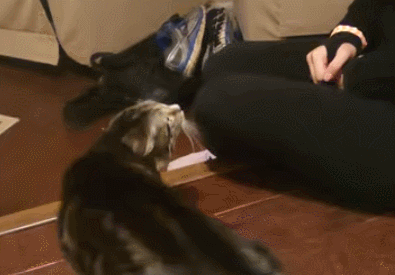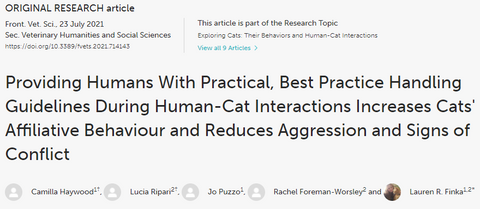In this issue, let me tell you about:
How to please stranger cats more when communicating with them?
What affects cats' first impressions of us
Avoid Visual Shock
In the animal kingdom, it usually seems that the bigger, the more dangerous and the tougher to deal with. Therefore, compared to "huge monsters", cats will be more inclined to get close to smaller creatures.

How to "shrink yourself a little"?
——You can use squatting, sitting, lying down, and half-kneeling positions.
Avoid Smell Shock
Don't leave other strong smells (perfume, disinfectant, etc.) on your body, which will defeat you when you first meet.
- If you happen to bring the food that cats like to eat, and it can emit a strong fragrance, then the kitten will definitely have a good impression of you up up↑
- If cats are interested in catnip, and you happen to have some with you, it will also attract the attention of kittens.
Avoid Auditory Shock
Because cats have very sensitive hearing, and they basically do not communicate with calls, so when dealing with cats, you must either keep silent or say hello softly.
Especially the first time you find a cat, don't yell "Ah!" "Ah!", the first impression will be directly negative.

Other Elements That Can Affect First Impressions
If you are going to a friend's house, try to avoid wearing clothes that will generate static electricity, which may make the cat "can't get close to you";
- Walk as softly as possible, avoid large-scale running and jumping movements, but also make a sound, so as not to scare the cat by "sudden appearance";
While some cats will enjoy playing with your hair and whiskers once they get to know you, it's usually advisable to avoid overly fluffy hair (like fried hair) for the first time.
Giving the cat a good first impression can prevent the cat from running away or hiding at all when it sees you.
However, if you want the cat to get closer to you, you need good interaction:

Impressions change depending on how you interact
In 21 years, researchers from Nottingham Trent University and Battersea Cats and Dogs Home (Adoption Agency) designed a set of "CAT Guide Manual".
And through 120 volunteers, 100 cats to be adopted (average 6 years old), and 535 observation tests, its effectiveness was verified:
- Cat hostility reduction: from 27% to 16%
- Reduced behavior of cats avoiding people
- The behavior of cats hiding in cages (shelter) has decreased

C: Let the cat choose and control
Reaching out gently in the direction of the cat...
- Let the cat choose whether to touch or interact with you (do not touch directly);
- Let the cat control how hard you stroke it (no force);
- Let the cat decide whether to continue (pause every 3-5 seconds).
A: Pay attention to cat body language, pause at any time
Pausing in time before the cat gets impatient will shorten the time it takes for the cat to come to you again.
So pause when you observe the following cat actions:
- Its body is away from you
- Flatten ears or turn around
- Tail wagging or fur twitching
- TA starts to lick hair by himself
- licking the nose
- Turning head suddenly towards you or your hand
T: Limit the contact (Touch) with the cat to the place they like
When first meeting a cat:
- Only touch the chin, cheeks and the base of the ears;
- Even if your friend’s cat turns its belly and likes to be scratched at the root of its tail, don’t try these sensitive parts when you are in primary contact;
- Pay close attention to the changes in the cat's limbs when touching the back and chest.
After the first interaction with the cat, if you want to interact with the cat next time, you need to do a good job of "aftermath" and a few details:
Don't neglect the aftermath and details
- For cats, food rewards are always more tangible than other forms of rewards.
- Rewards can be seen and smelled by the cat initially, but are best given after the interaction. Let the cat's associative memory be: "After playing, there will be something to eat" instead of "After eating, you will have to be touched".
- It is best to sit away from doors and windows, where the interaction is not easy to be disturbed; there are shelters in the room, even if the cat does not use them, it will reduce the tension.
If the cat is frightened or impatient in the middle, and wants to attract the cat's attention again, don't use your hands or other previous tricks. Instead, you can start with a cat teasing stick.

- If the timid cat feels anxious, ignore the cat and avoid following it visually. After the cat calms down, it may come to explore you curiously.
Having said so much, it can be summed up in one sentence:
You must learn to refuse to welcome and to accept when you see good, let the cat experience the taste of it, and it will never forget you.
